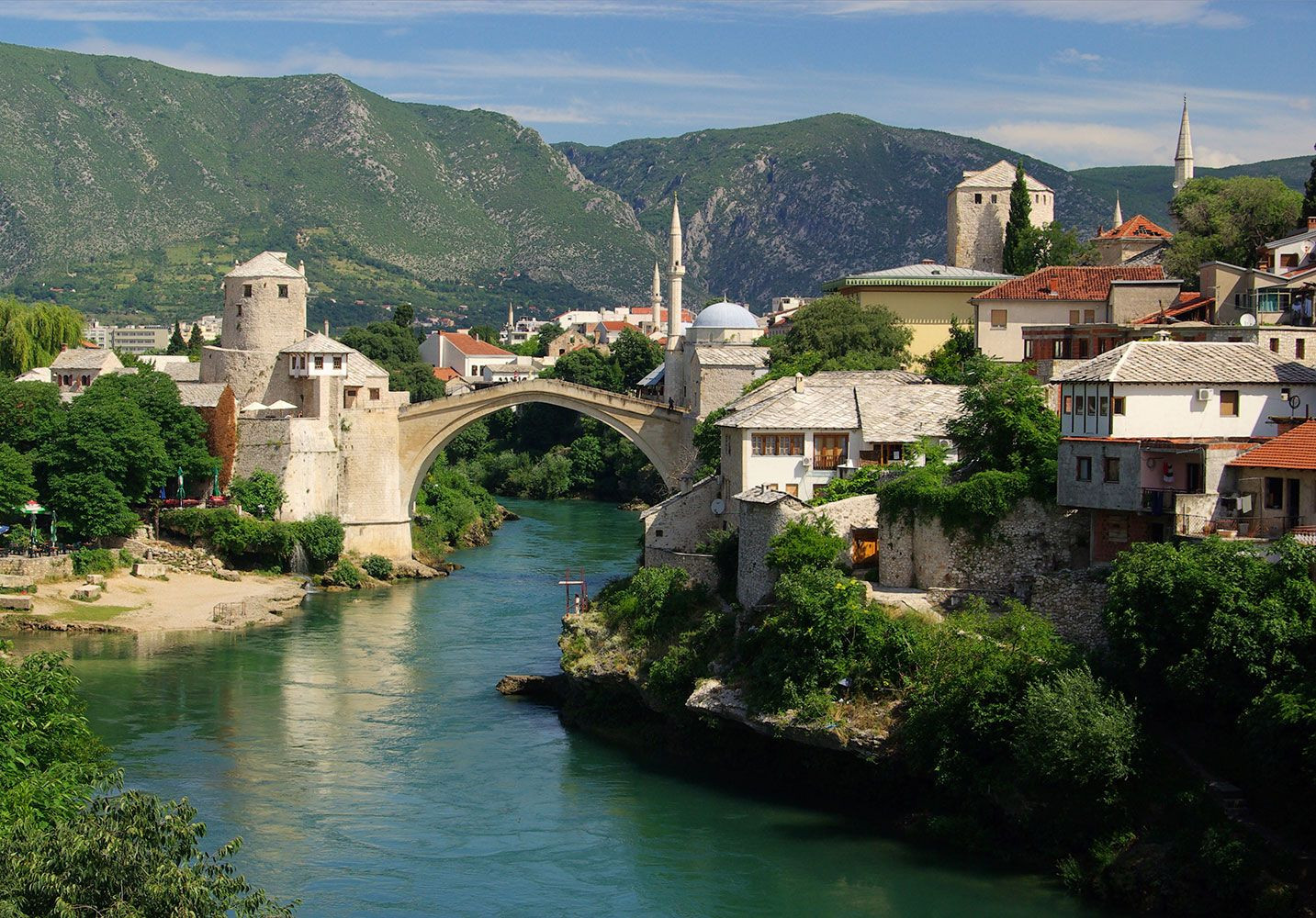Bosnia and Herzegovina, often referred to simply as Bosnia, is a captivating country nestled in the western Balkan Peninsula of Europe. Understanding Where Is Bosnia-herzegovina geographically is key to appreciating its complex history, diverse culture, and stunning landscapes. This nation, bridging Eastern and Western Europe, holds a pivotal position in the Balkans, a region known for its rich tapestry of cultures and historical crossroads.
Geographically, Bosnia and Herzegovina is located in Southeastern Europe, bordered by Croatia to the north, west, and south, Serbia to the east, and Montenegro to the southeast. Its southern border also touches the Adriatic Sea for a very short stretch. The country is traditionally divided into two main historical regions: Bosnia in the north and central areas, and Herzegovina in the south and southwest. It’s important to note that these historical regions are distinct from the political entities established by the Dayton Accords in 1995.
 Locator map of Bosnia and Herzegovina in Europe, highlighting its position in the Balkan Peninsula
Locator map of Bosnia and Herzegovina in Europe, highlighting its position in the Balkan Peninsula
The Dayton Agreement carved Bosnia and Herzegovina into two autonomous entities: Republika Srpska, primarily in the north and east, and the Federation of Bosnia and Herzegovina, encompassing the western and central regions. Despite these political divisions, the country functions with Sarajevo as its capital city, a vibrant hub steeped in history and culture. Other significant cities include Mostar, famed for its iconic bridge, and Banja Luka, a major city in the Republika Srpska.
Bosnia and Herzegovina’s location has profoundly shaped its identity. Throughout history, it has been a land where influences from both the East and West have converged. This is evident in its diverse religious landscape, where Islam, Orthodox Christianity, and Roman Catholicism coexist. These faiths are largely associated with the three main ethnic groups: Bosniaks, Serbs, and Croats, respectively, contributing to a rich multi-ethnic society.
This strategic position within the Balkans, between Serbia and Croatia, has also made Bosnia and Herzegovina historically vulnerable to nationalist ambitions and territorial disputes. The 20th century witnessed significant upheaval, including its incorporation into the Kingdom of Serbs, Croats, and Slovenes after World War I, and later as a republic within Yugoslavia following World War II. The breakup of Yugoslavia in the early 1990s led to a referendum for independence in 1992, which was tragically followed by the Bosnian War.
The Bosnian War, a brutal conflict marked by ethnic cleansing, stemmed from nationalist tensions and resulted in widespread displacement and suffering. International intervention eventually led to the Dayton Accords, which brought an end to the war but also solidified Bosnia and Herzegovina as a complex, decentralized state. Even today, the country navigates the delicate balance between its diverse populations and aspirations for a unified future.
In conclusion, Bosnia and Herzegovina’s location at the heart of the Balkans has been instrumental in shaping its unique character. It is a country where Eastern and Western cultures meet, where diverse ethnicities and religions intertwine, and where a turbulent history has paved the way for a resilient and culturally rich nation. Understanding where Bosnia-Herzegovina is situated provides essential context for exploring its captivating story and appreciating its place in the modern world.

